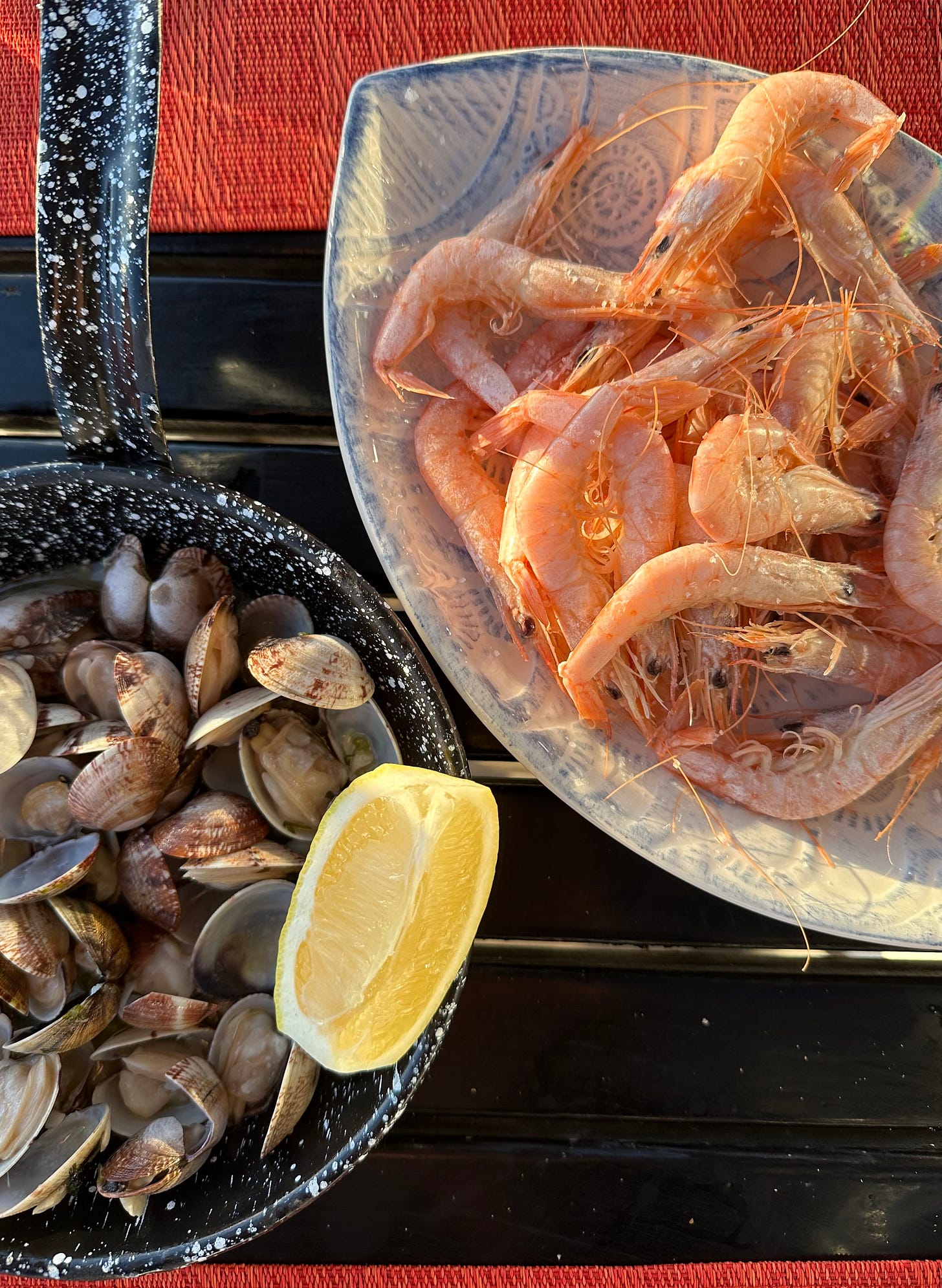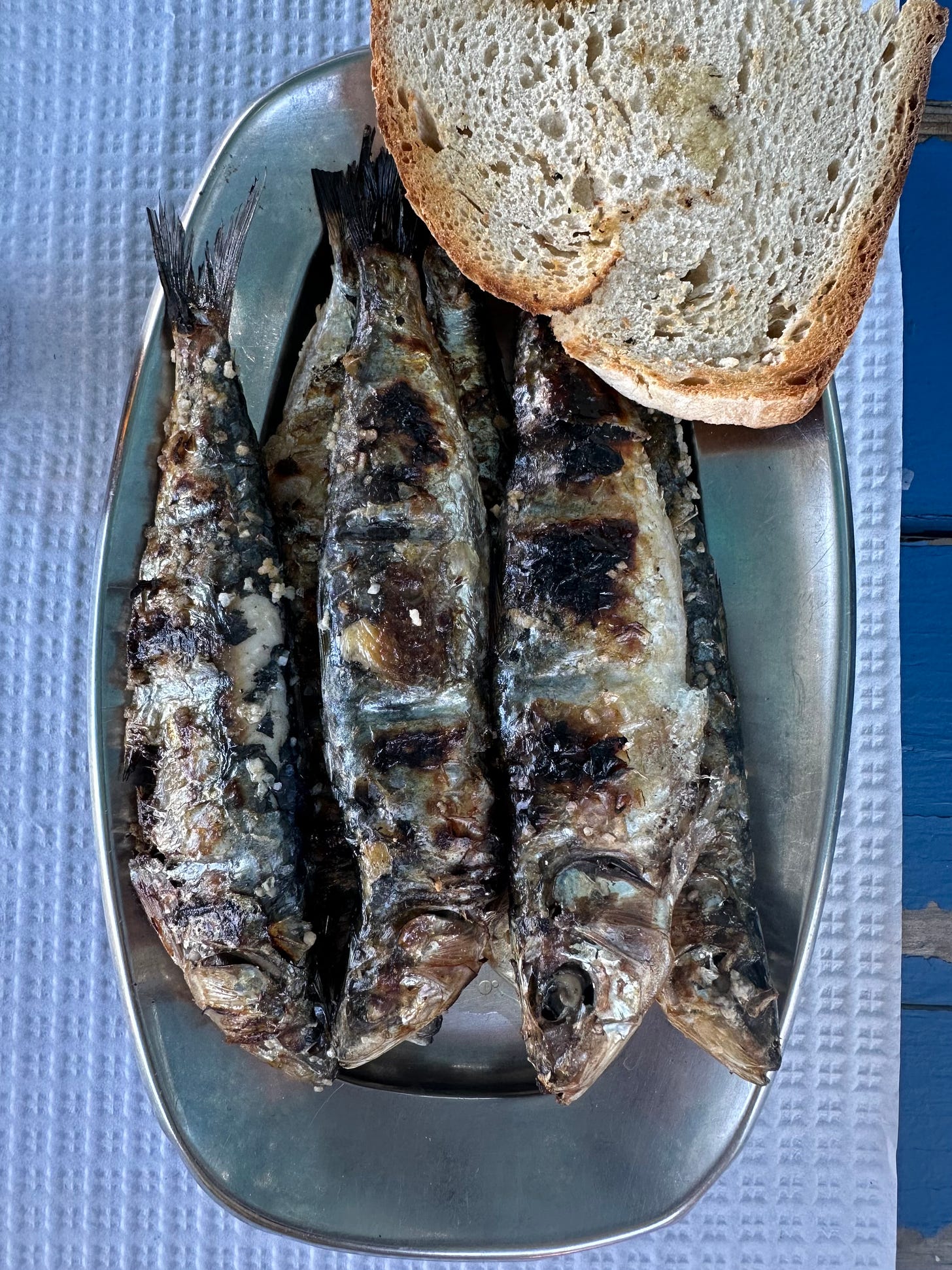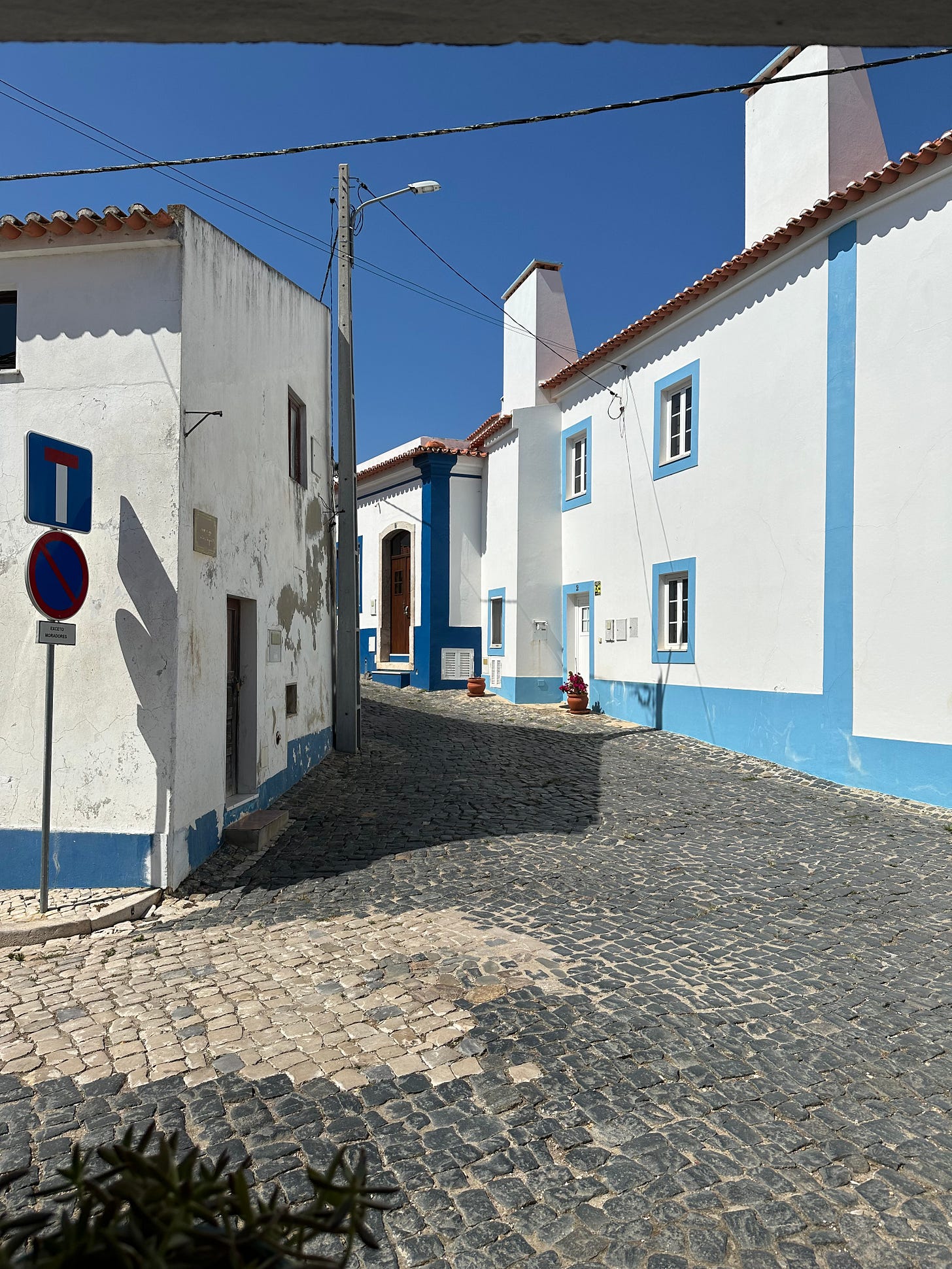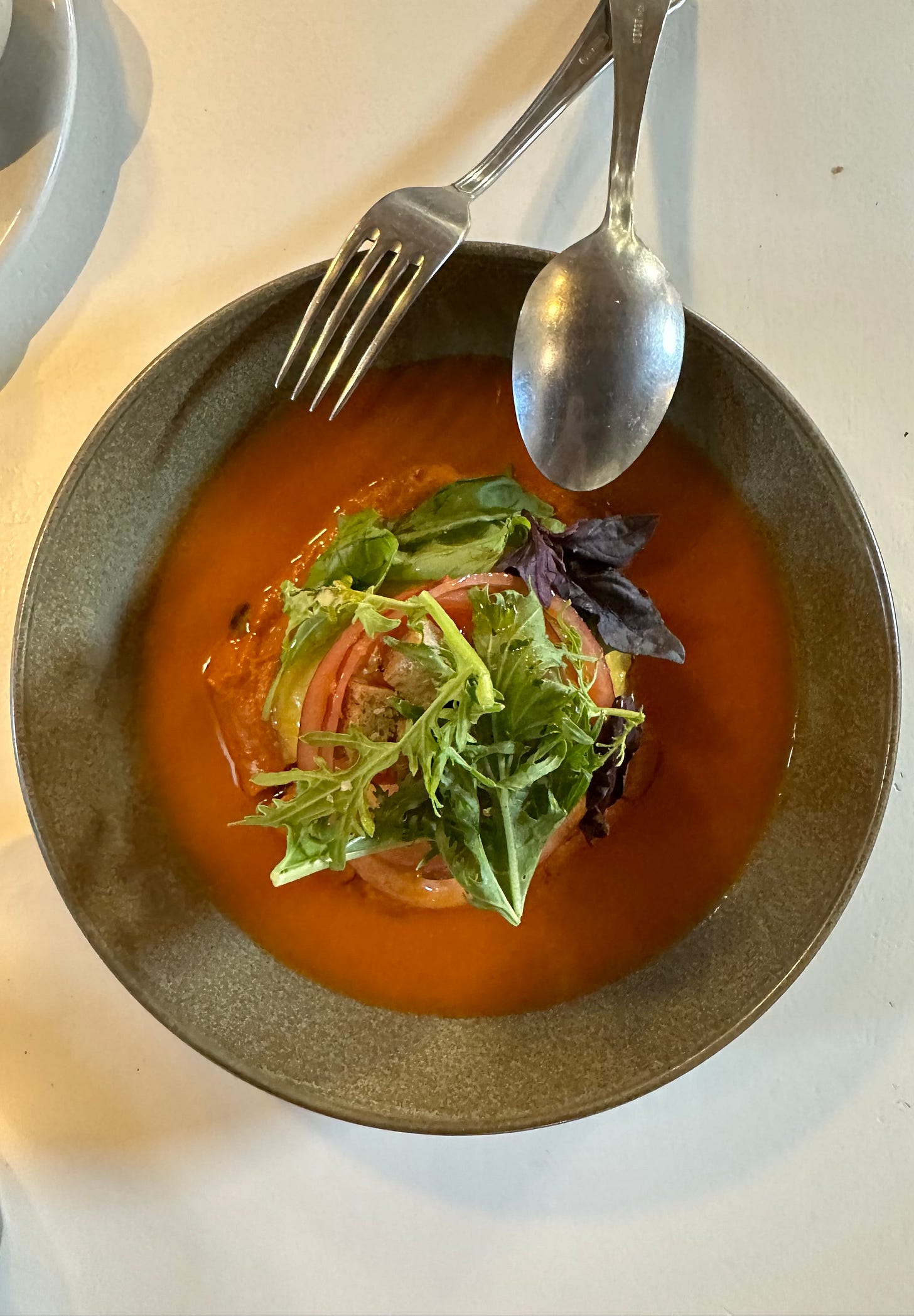Found and Lost in Portugal
At its best, travel lets us loosen our grip on who we think we are, to learn about who we want to become
I just had a birthday that took me, firmly, into the second half of my fifties, and I was lucky enough to get to celebrate in Portugal. Three days of endless walking and sunshine in Lisbon, and then we were off to the Alentejo region — a land of cork trees, giant stork nests atop lampposts, cool Atlantic breezes.
We didn’t tour. We didn’t hike, drive to the more well-known (and busier) Algarve, see as much of the country as we could. We settled in around Comporta, read books, walked on the beach, and explored a cluster of tiny towns.
Also, we ate. Bucketloads of clams and pink shrimp; tomato rice with lobster, many plates of sardines and turbot and dourada, simply prepared with lemon, olive oil, maybe a little garlic.
I haven't been drinking much these past few years, but I couldn’t resist the freshness of the local white wine, almost-cheap and casually poured despite its nuance and high quality.
But the best part of the trip — the best part of any successful trip that is more vacation than excursion — was the gradual shedding of layers. Layers of clothes, of stress and, in the last few days, even of self. It’s a type of unwinding that I love — a letting go of what I hold tightly in my day-to-day life, in order to see the bigger picture. I take notes and I talk to myself and I fantasize about other lives; the lives I won’t lead but like to think I could, if I chose. It’s a sense of lostness that I crave — depend on, even — an opening up of the world that stays with me long after the laundry is done and the suitcases are put away.
The other thing that has stayed with me is the food. I love the Portuguese attitude of simplicity and sincerity, even in upscale restaurants. That fish, that wine! Tomatoes were in season, so we ate them with every meal, and I rediscovered salmorejo, a beloved cold tomato soup from Spain. In the Alentejo, it was often embellished with “migas,” the local preparation made with leftover bread.
We rode bikes to the beach. The sun was hot but the air was cool. The tomatoes were in season. I turned fifty-seven.
Recipe: Salmorejo
There is only one trick to salmorejo — make it the day before you want to serve it. The flavours will develop in the fridge overnight, turning it from a blend of ingredients into something truly delicious.
8 ripe plum tomatoes
stale bread — one small baguette, half a large baguette or a few slices stale sourdough, cut into small pieces or, if very stale, pulverized into crumbs (you should end up with about 2 cups of bread pieces)
4 tsp good quality sherry vinegar, more or less
1-1 1/2 tsp salt, more or less
1/2 clove garlic, roughly chopped
pinch of sugar
1/3 cup good quality olive oil
Skin the tomatoes: Cut an X in the bottom of each one, bring a large pot of water to boil and immerse tomatoes in boiling water for 30 to 60 seconds. Remove to an ice bath, and peel.
Cut tomatoes into quarters, removing stem ends, and purée with your preferred tool until smooth. (I like an immersion blender because it has the fewest parts for washing up, but a regular blender or food processor will work, too.) Add bread and let sit for a few minutes to hydrate before blending into tomatoes.
Add vinegar, salt, garlic and sugar, and purée until very smooth. With motor running, add olive oil in a steady stream until well incorporated. Taste and adjust seasoning, keeping in mind that the flavour will develop in time. Chill in fridge overnight and serve in glasses or bowls, with elaborate garnishes, or just as it is.
Serves 4-6, depending.











🩷
I am transported 🔆💕🐟